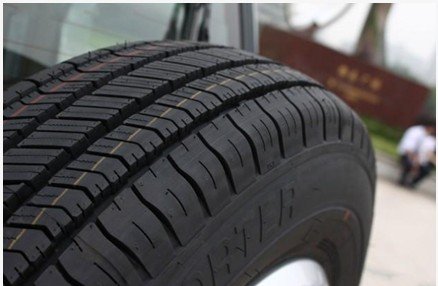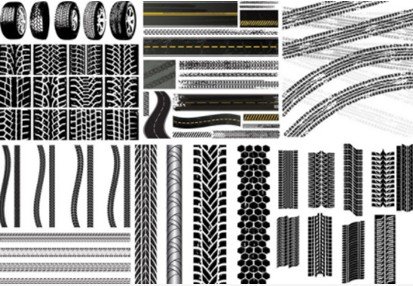Tire tread refers to the "grooves" on the surface of the tire, and there's a lot to consider when it comes to these designs. Tire tread patterns can generally be categorized into five types:

Combined Longitudinal and Lateral Tread Patterns
●Advantages: This pattern combines the benefits of longitudinal treads, such as good drainage and low noise, with the strong performance characteristics of lateral treads, offering better drive and braking performance compared to purely longitudinal patterns.Tires with this type of tread have strong adaptability and a wide range of applications. They are suitable for various types of hard roads, including rougher conditions, and can be used on both passenger cars and trucks. As a result, this combined tread pattern has become the mainstream choice.
●Disadvantages: This tread type can lead to irregular tire wear.
Longitudinal Tread Patterns
●Advantages: Longitudinal treads offer excellent handling stability, low rolling resistance, and reduced risk of lateral skidding. They are generally used on good road surfaces, such as highways or urban roads. These tires have low rolling resistance, which reduces friction with the ground and offers better directional stability, making them ideal for high-speed driving.
Longitudinal tires also provide excellent drainage performance, making them less likely to skid on wet roads and generating lower noise during driving.
●Disadvantages: Longitudinal tread tires tend to have relatively weaker braking performance and less driving force compared to other tread patterns. They are not suitable for poor road conditions, such as sandy or muddy roads.
Off-Road Tread Patterns
Off-road tread patterns are specifically designed to handle dry, wet, rugged mountain roads, as well as muddy or sandy terrains.
●Advantages: These tread patterns are like all-around athletes, with multiple strengths, making them suitable for various harsh environments and weather conditions. Therefore, they are the best choice for vehicles like SUVs or off-road vehicles.
Off-road treads are available in both directional and non-directional patterns. Directional treads provide a clear driving direction. These tires are ideal for use on rough, uneven roads, loose dirt tracks, and off-road areas.
●Disadvantages: Due to the high contact pressure and rolling resistance of the tread pattern, they are not suitable for long-term driving on smooth, hard roads. Otherwise, this will accelerate tire wear, increase fuel consumption, and result in greater vehicle vibrations.

Lateral Tread Patterns
●Advantages: With a lateral tread design, the tire's contact area with the ground increases, offering better braking and driving force performance. This significantly compensates for the shortcomings of longitudinal tread tires. These tires are well-suited for harsh road conditions such as rural roads or construction sites.
●Disadvantages: Lateral treads have poor drainage performance and heat dissipation. Additionally, while they increase the ground contact area, they also increase noise. In terms of vehicle handling, they are less agile compared to longitudinal tread tires.
Mud and Snow Tread Patterns
●Advantages: These treads are arranged in block patterns, and when the vehicle drives on snow or muddy surfaces, the treads embed deeply into the snow or mud, providing traction and driving force. Block-patterned tires offer excellent driving force and braking performance.
●Disadvantages: Block-patterned tires are relatively more expensive and are not commonly used for regular road conditions. They are highly seasonal and are typically designed for snow conditions, meaning they are only suitable for winter use. Storing them can also be cumbersome as they take up more space.



